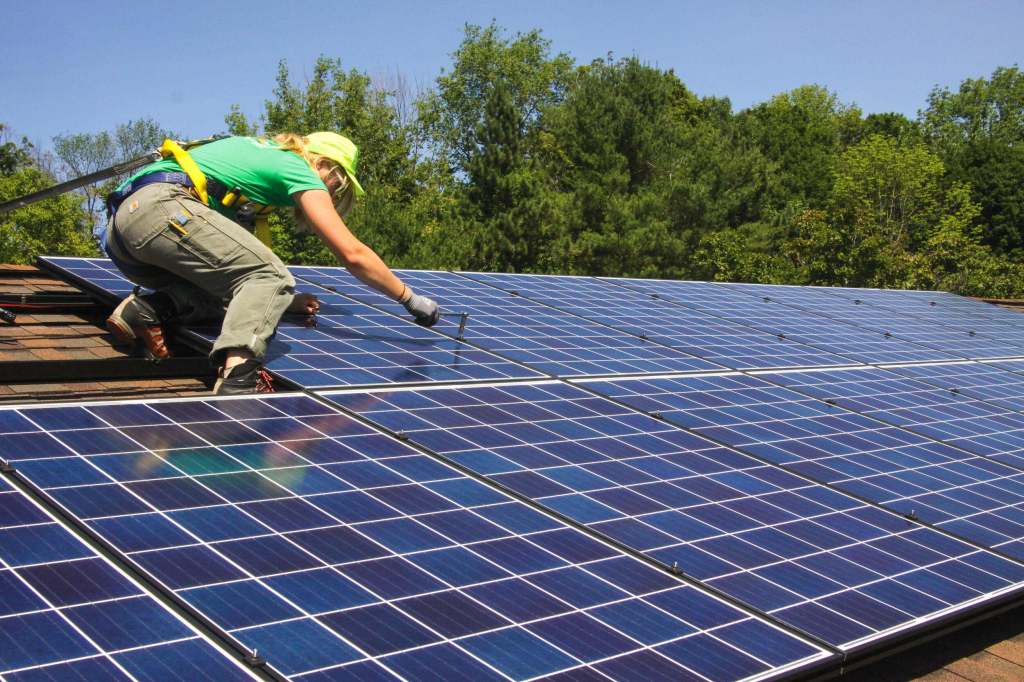The ongoing transformation of the U.S.’s energy systems—from a centralized system of fossil fuel plants to a distributed one with large- and small-scale renewable energy projects—creates a compelling opportunity to build the energy infrastructure of the future in partnership with local and historically excluded communities.
The Gist
The study, Empowering Communities with Solar, led by Anjali Balakrishna and Liz Kalies, TNC’s lead renewable energy scientist for North America, explores how distributed solar projects can be designed to maximize their positive impact on the communities they serve, with a particular focus on how to shift power, remove barriers and provide social and economic benefits to historically excluded communities.
“This guide and its underlying research,” notes Balakrishna, “provide insight, case studies and recommendations for the energy industry on how distributed solar generation can be an important tool for empowering historically excluded communities in the energy transition – so those communities can be active drivers and owners of a better future, not overlooked casualties of a harmful system.”
The Big Picture
Decentralized energy – also called Distributed Energy Resources (DER) or Distributed Generation (DG) – are energy resources (often renewable) that generate power “at or near where it will be used” and are connected to local energy distribution systems rather than to utility-scale generators that connect to transmission lines.
Distributed solar projects, in particular, can be a powerful way to empower communities and build a strong, beneficial relationship between communities and energy production and use.
The study outlines five learnings and accompanying recommendations to support stakeholders across the energy industry in promoting community-centric approaches to solar project design and development.
- Safe and efficient buildings are an important prerequisite to “going solar.” A community-centric approach to clean power starts by ensuring homes and buildings are in good condition and efficient.
- Community-centric solar is held back by a lack of relatability and trust between communities and the industry. A legacy of harmful interactions with the energy system – largely driven by the 20th century centralized, fossil-fuel powered model – has led to distrust amongst communities that has impacted their willingness to engage with solar energy projects. The renewable energy industry has not succeeded in rebuilding trust, and in some cases has developed a reputation for pushing communities without making sure they understand and relate to their projects.
- Community-centric projects can offer transformative benefits that go beyond cheap power. Some of these benefits are tangible – like educational and professional opportunities, new revenue streams, resilience in extreme weather, and co-location of community sustainability services – while others are more intangible – like community building, participation in climate action and the energy industry, and serving as a model for other communities.
- Community-centric projects face significant funding gaps, even with more supportive federal policy. Despite a supportive federal policy environment, projects designed to benefit historically excluded communities face financing barriers.
- Organizing and advocacy can help build a movement for community-centric solar with impact beyond individual projects. The energy democracy movement has laid a strong foundation and works to connect community-centric projects and advocate and organize for policy changes and education efforts that can enable more communities to benefit from solar.
The Takeaway
“It is important to note,” says Balakrishna, “that promoting solar projects based in and designed to serve communities is not the only way to achieve a more just and equitable energy system. Utility-scale clean energy projects are necessary to meet growing power demand and ensure reliable power service and can benefit from many of the learnings described here.”
Without a far-reaching overhaul of the energy system, the centralized grid will continue to play an important role, and distributed generation can both support grid strength and help achieve community empowerment goals. Ultimately, creating a more just and equitable energy system will not happen by default–it takes intentional action on the part of all the key stakeholders in the energy industry.



